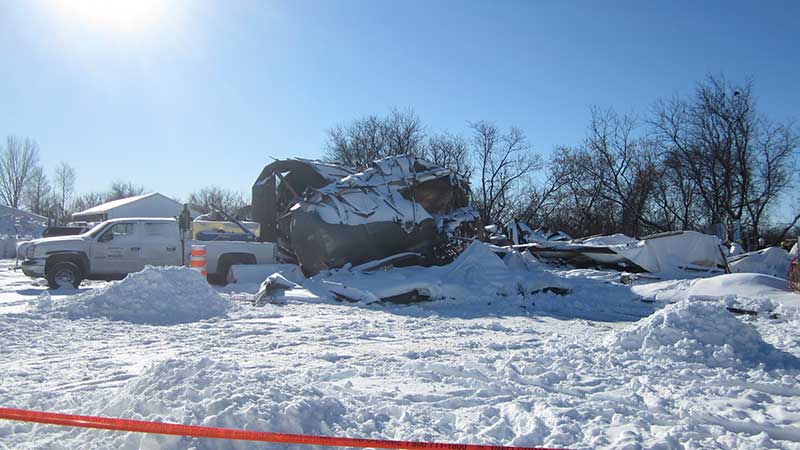
Quebec’s workplace safety board says welding led to blast that killed three workers at Propane Lafortune
December 19, 2023
By
Todd Humber

The remains of the tanker trailer from the explosion that killed three workers at Propane Lafortune. Photo: CNESST
Quebec’s workplace safety board has identified the cause of an explosion that killed three people on Jan. 12, 2023, at Propane Lafortune in St-Roch-de-l’Achigan, Que.
On the day of the accident, a worker from 9444-1888 Québec Inc. (Soudure A.C.) was welding inside the garage at Lafortune Inc. While working on the chassis of a tanker trailer containing hydrocarbons, an explosion followed by a fire occurred.
The explosion and ensuing fire killed the welder, Christophe Paradis, 26, and two secretaries working in an adjacent office, Celine Pilon, 65, and France Desrosiers, 65.
Causes of the accident
The CNESST’s investigation identified two causes for the accident:
- Gasoline vapours ignited from one compartment of the tank, resulting in the explosion and subsequent fire in the vessel.
- Welding work on a tank trailer containing gasoline vapours, carried out inside a building, endangered the workers inside.
Following the accident, the CNESST prohibited Lafortune from removing rubble from the site without the presence of a CNESST inspector. It also prohibited the company from undertaking any hot work on or near a tank that contains or has previously contained combustible or flammable products.
The CNESST required the development and implementation of a security procedure for this purpose. It also prohibited Soudure A.C. from carrying out welding work on and near a tank that had contained hydrocarbons and in a repair pit. It also required Soudure A.C. to develop a safe work method.
Board inspector Martin Rondeau says the company and the welding contractor should have verified that the tanker was empty of fuel before work started. Rondeau says the risk of danger was increased because the welding was being done indoors.
The CNESST says its legal department is analyzing the inspection report to determine whether the board should issue fines.
How to avoid a similar incident
The CNESST issued the following tips in the wake of its investigation:
- identify, control and eliminate hazards by conducting an analysis prior to undertaking any hot work;
- eliminate sources of ignition in areas where flammable vapours may be present, including those from the building’s electrical systems;
- Perform welding and cutting more than 11 metres of combustible and flammable materials, unless all ignition hazards are identified and controlled;
- prohibiting the parking of tanker vehicles inside a building that is not specifically designed for this purpose;
- inspect and clean the exterior of tank vehicles for leaks in the tank, piping or valves before parking them inside;
- if possible, avoid welding, cutting or heating a container, such as a tank, that has contained combustible materials or that may release toxic or flammable vapours when heated.
- clean containers and tanks to remove any combustible material or material that may release toxic or flammable vapours when heated;
- check the concentration level of flammable vapours and gases;
- if the hazard remains after cleaning, purge the container with an inert gas or fill the container with water to within a few centimetres of the welding, cutting or heating point and ventilate the remaining space to allow hot air to escape.
- inform workers of the hazards associated with their work and provide them with appropriate training and supervision in order to develop the required skills and knowledge.
– with files from the Canadian Press.